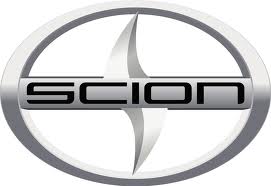xD L4-1.8L (2ZR-FE) (2008)
/Page-858016.png)
(a) Confirm the malfunctioning circuit or part.
NEXT -- Continue to next step.
8. ADJUST, REPAIR OR REPLACE
(a) Adjust, repair or replace the malfunctioning circuit or parts.
NEXT -- Continue to next step.
9. CONFIRMATION TEST
(a) After the adjustment, repairs or replacement, confirm that the malfunction no longer exists. If the malfunction does not reoccur, perform a
confirmation test under the same conditions and in the same environment as when the malfunction occurred the first time.
NEXT -- END
2. CUSTOMER PROBLEM ANALYSIS
HINT:
-
In troubleshooting, confirm that the problem symptoms have been accurately identified. Preconceptions should be discarded in order to
make an accurate judgment. To clearly understand what the problem symptoms are, it is extremely important to ask the customer about the
problem and the conditions at the time the malfunction occurred.
-
Gather as much information as possible for reference. Past problems that seem unrelated may also help in some cases.
-
The following 5 items are important points in the problem analysis:
3. SYMPTOM CONFIRMATION AND DIAGNOSTIC TROUBLE CODE
HINT: The diagnostic system in the SCION xD has various functions.
-
The first function is the Diagnostic Trouble Code (DTC) check. A DTC is a code stored in the ECU memory whenever a malfunction in
the signal circuits to the ECU occurs. In a DTC check, a previous malfunction's DTC can be checked by a technician during
troubleshooting.
-
Another function is the Input Signal Check, which checks if the signals from various switches are sent to the ECU correctly.
By using these functions, the problem areas can be narrowed down and troubleshooting is more effective. Diagnostic functions are
incorporated in the following system in the SCION xD.
-
In the DTC check, it is very important to determine whether the problem indicated by the DTC is either: 1) still occurring, or 2) occurred in
the past but has since returned to normal. In addition, the DTC should be compared to the problem symptom to see if they are related. For
this reason, DTCs should be checked before and after confirmation of symptoms (i.e., whether or not problem symptoms exist) to
determine current system conditions, as shown in the flowchart below.
-
Never skip the DTC check. Failing to check DTCs may, depending on the case, result in unnecessary troubleshooting for systems operating
normally or lead to repairs not related to the problem. Follow the procedures listed in the flowchart in the correct order.
-
The following flowchart shows how to proceed with troubleshooting using the DTC check. Directions from the flowchart will indicate how
